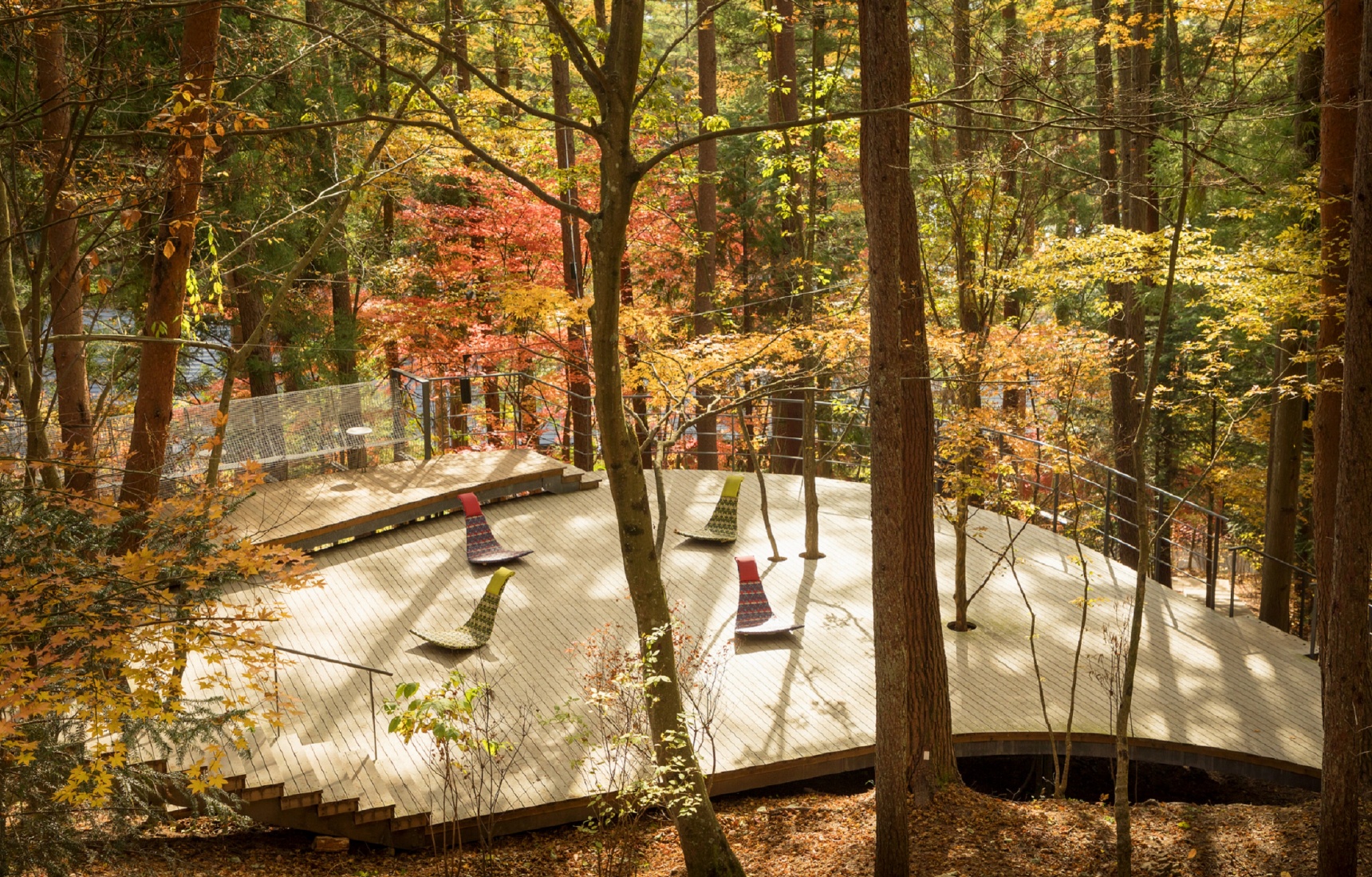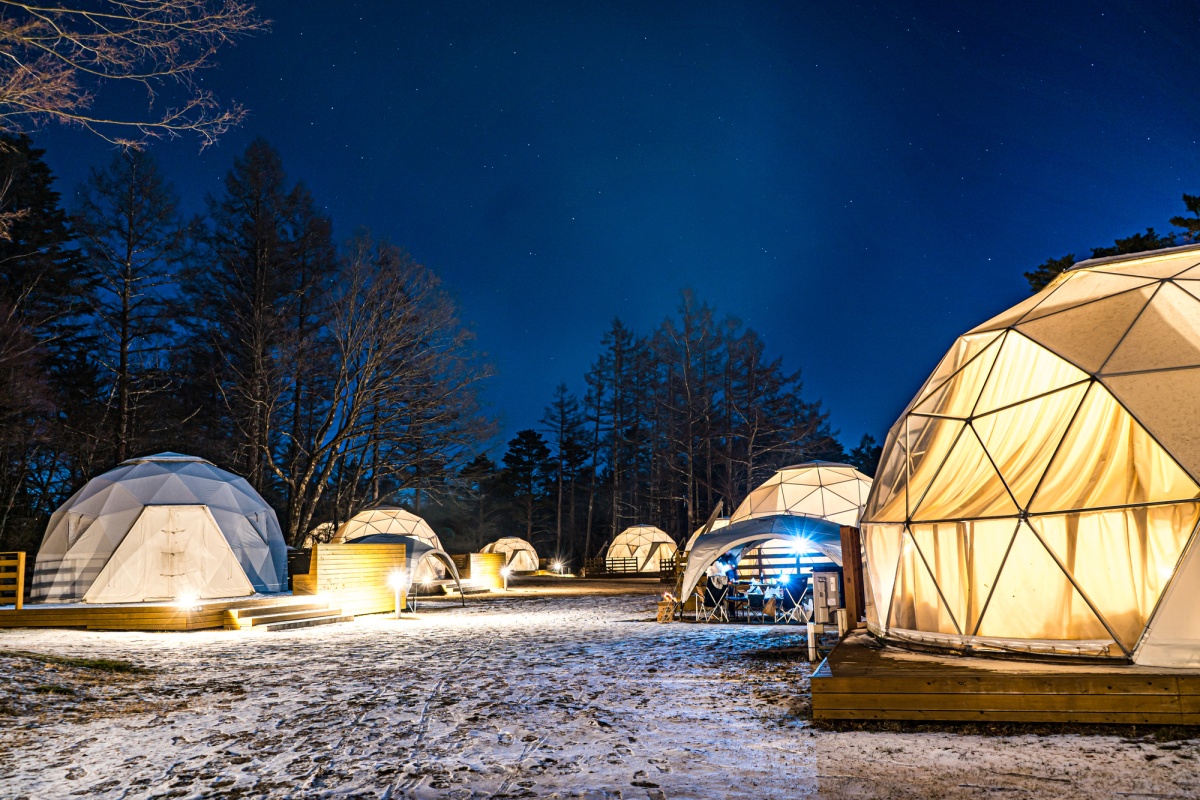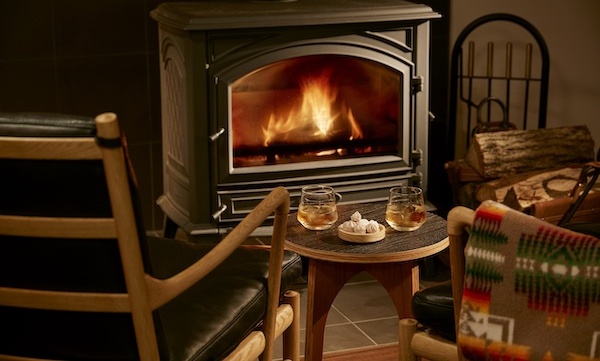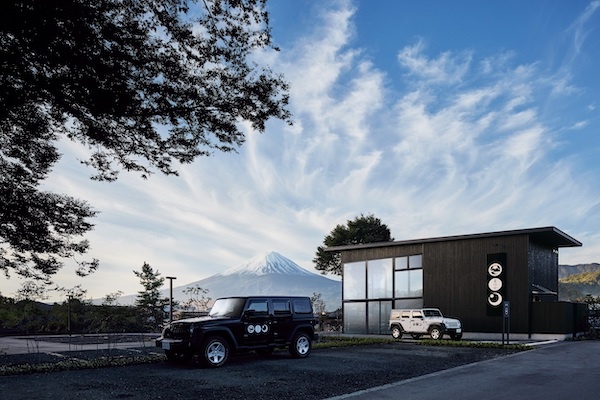Japan's Finest Glamping Spots

The Cloud Terrace of the Hoshinoya Fuji Resort (photo by Hoshino Resorts)
The beauty of glamping (a term derived from the words "glamorous camping") is that all the hard work has been done before the camper even arrives. Julian Ryall has prepared this guide to spots where visitors can best enjoy Japan's outdoors in unmatched luxury.
The Glamping Way of Life

Geodesic domes lit up at night
The very thought of camping will trigger flashbacks in many people of sausages that have been badly singed and clouds of mosquitoes, followed by a fitful night spent beneath leaky canvas. Thankfully, the concept of “glamping”—or glamorous camping—has caught on across Japan in the last couple of years, with luxurious venues now dotted the length and breadth of the nation.
The term “glamping” was first coined in the UK in 2005 but the concept was quickly embraced in Japan, where plenty of city-dwellers have long enjoyed heading to the great outdoors whenever the opportunity presents itself. For those perhaps unaccustomed to banging in tent pegs and preparing a meal over an open fire, the beauty of glamping is that all the hard work has been done before the camper even arrives. The accommodation is in place, whether it is an elegant tent, a “yurt” or geodesic dome, a welcoming fire is often already blazing and the ingredients for the evening meal will be delivered ready for the easy-to-use gas-fired barbecue. All the guest has to do is sit back and enjoy the experience, admiring a night sky uninterrupted by the neon of the city, often from the comfort of a hot tub on the deck.
The luxury camping sector undoubtedly benefited from the coronavirus pandemic, when millions of Japanese who would otherwise have travelled overseas for the summer holidays were forced to stay closer to home. But the glamping boom has also caught the attention of people who might previously have opted for a city break and a hotel.
For anyone planning to explore Japan’s magnificent nature, here are some of our favorite glamping sites.
Fujino Kirameki Fuji
Flanked by dense pine forest in the hills above the town of Gotemba, Fujino Kirameki Fuji is positioned on a slight incline that offers views towards Mount Fuji, which rises majestically on the horizon around 20km to the north-west.
The site has two glamping options, with a couple of spacious geodesic domes on elevated decks at the upper extremities of the 16,000-square-meter venue and the remaining accommodation made from refurbished shipping containers. The transformation is dramatic, with the comfortable interiors from 54 square meters to 153 square meters.
"It is a treat to sit on the deck with a fire burning in a brazier, the clouds scudding across Mount Fuji turning pink as the sun sets."
My unit has room for four guests and air conditioning that is welcome in the sticky summer months. Shelving covers one entire wall and holds a selection of books, an i-Pad with all the details of the site and the surrounding area and a frisbee, football and badminton set for energetic campers.
A separate container has a shower, toilet and indoor dining area, but it is a treat to sit on the deck that divides the two units with a fire burning in a brazier and the clouds that scud across Mount Fuji turning pink as the sun sets.
On cue, the staff arrive with a series of boxes that are laid out on the table on the deck. The starters are mostly made with local ingredients, including camembert cheese with blueberry jam and prosciutto made from locally raised pork, while the trout are from the nearby Fuji River. The squid and shrimp for the seafood course are delicious, while the huge tomahawk steak sizzles satisfyingly on the grill.
The Fujino Kirameki Fuji Website
Hoshinoya Fuji

Japan’s very first glamping resort is also arguably its most luxurious. Set amid the red pine trees that overlook Lake Kawaguchi with Mount Fuji rising beyond it, new arrivals at Hoshinoya Fuji are issued a backpack containing a pair of binoculars to seek out the local wildlife, a headlamp, a map of the hotel’s expansive grounds, a steel bottle for hot drinks, insect repellent and even an inflatable cushion for delicate behinds.
The Cloud Terrace is at the top of the hill and has a campfire where guests can toast marshmallows or sip coffee. Decks at different levels have beanbags and loungers. One section has a canvas cover, with a classic black-and-white movie playing on the roof.

The accommodation may be described as “cabins”, but they are a long way from rudimentary log shacks. Set into the hillside below the restaurant, each of the 40 lavishly appointed units has an en-suite bathroom with a large window and a deck fitted with a lounging sofa. The bedroom has a vast floor-to-ceiling window overlooking the lake and Mount Fuji.
Guests are able to make their own pizzas in the forest, chop their own wood or take an early morning canoe trip on the lake. The hotel can also arrange horse riding on private trails, has classes on how to smoke food with chips from old whisky barrels or take guests searching for flora and fauna with a guide. Keep an eye out for flying squirrels, deer and hawks.
Hoshino website
Grace Niseko
Niseko is most famous as the nation’s winter sports playground, but this part of Hokkaido is keen to attract visitors throughout the year and is promoting its “green season.”
As well as spacious tents that offer unobstructed views towards the impressive outline of Mount Yotei, Grace Niseko has cosy chalets that will offer a more comfortable stay once the snowy season begins.
Summer activities in Niseko include rafting, canoeing and canyoning, horse riding, golf, mountain biking, fishing and hiking. There is also a good selection of onsen in the area, with three hot springs within 15 minutes of the glamp site.
Grace Niseko website
Glamping Resort Aso
The heart of Kyushu is dominated by the largest active volcano in Japan, Mount Aso, with a caldera that is fully 25km across and the centerpiece of the Aso-Kuju National Park. At 1,592 metres, Mount Taka is the highest of the five peaks in the centre of caldera, but Mount Naka is the most accessible and, at present, the most active. Glamping Resort Aso is on the southern edge of the caldera, as it begins to rise, but looking towards the smoking volcano.
Glampers can explore the region’s undulating grasslands on horseback or electric mountain bike, breaking their journey for a lavish picnic. Back at the glamping site, relax with some yoga, try your hand at local handicrafts, such as making leather bracelets, or pamper yourself with a massage.
And when the sun goes down and the fire in the brazier is down to a glowing orange, sit back and admire the stars of the milky way in all its glory.
Glamping Resort Aso website
8-Point Resort Okinawa
While many glamping resorts tend to be in the more mountainous regions of Japan, 8-Point Resort bucks that trend with sea views over the south-east coast of Okinawa. The site has a number of spacious and bright geodesic domes that are equipped with air conditioning as well as heaters. Each unit can accommodate four in large, comfortable beds, with bath care products from Pola. The barbecue equipment and food is provided and includes Ishigaki beef and an Okinawan pineapple pork dish, as well as locally caught lobster.
Visitors can use the private pool in the summer months or take advantage of the sauna tent heated by a wood-burning stove, as well as participating in a yoga class or having an aromatherapy massage.
And as the sun sets, get comfortable around the bonfire and let off some fireworks.
8-Point Resort website



